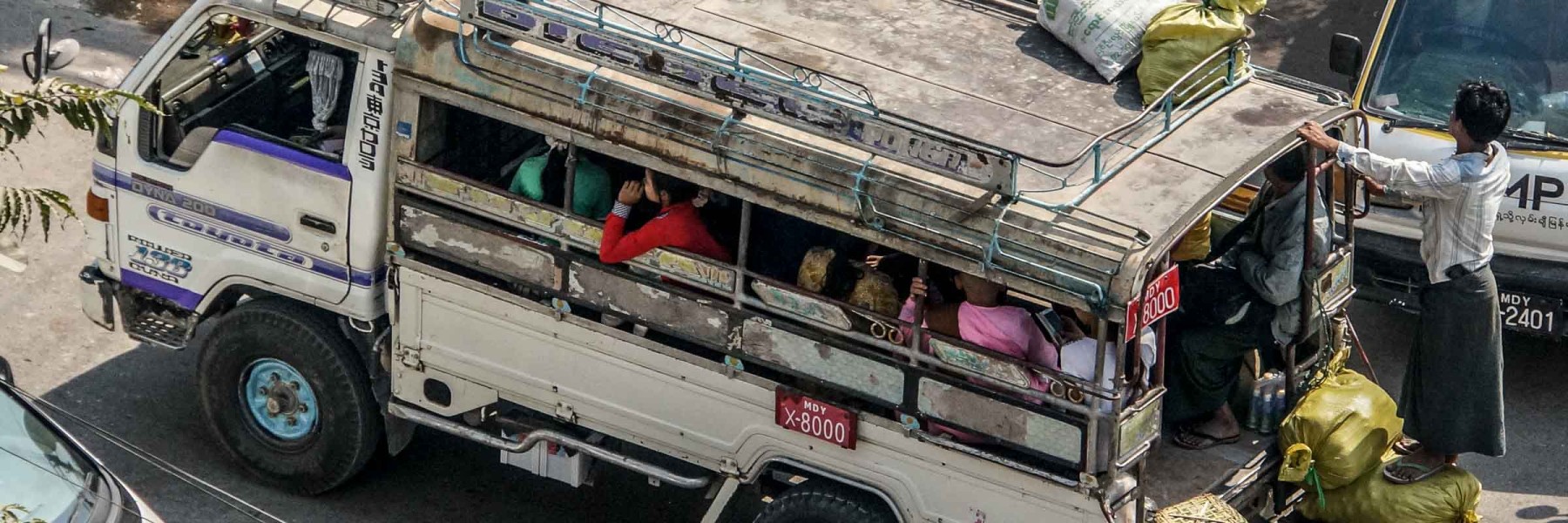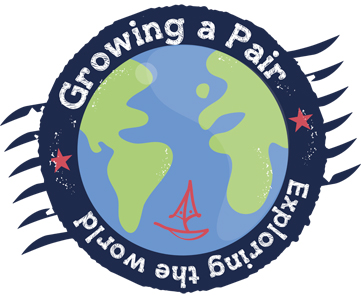
Mandalay’s lacklustre concrete-block ordinariness…not

The Lonely Planet book describes Mandalay as ‘hot, busy and not immediately beautiful’ and then goes on to mention the pagodas, churches, Indian temples and mosques, and the monasteries and craftwork shops “amid the central grid of lacklustre concrete-block ordinariness”. Personally, I think guide books sometimes miss the point.
We pulled into Mandalay’s jetty (it’s not a jetty, it’s a sand river bank) to the sights and sounds of Mandalay’s laundry. Women and children scrubbing clothes in the dirty river water, between the ferries. Washing lines full of every colour of bedsheet, others draped on the sand to dry. Toddlers and dogs playing. Plastic rubbish everywhere. The smell of rotting waste and sewage. Taxi drivers immediately surround us. “Taxi?! Where you go?”. He says it is 8000 kyats to Hotel Nylon. “How far is it?” “Fifteen minutes”. Dez gets his phone out and opens maps.me. The price immediately drops to 6000 kyats. We load our bags into the back of an open truck with two other backpackers and get in after them, sitting on the floor. It takes five fascinating minutes to get to Hotel Nylon. The traffic is mad. Cars, motorbikes, bicycles with sidecars, all loaded with people and other random stuff. A minibus speeds past beeping its horn, half a dozen people sitting on the roof. We pass a motorbike with a maroon-robed monk on the back. A truck passes on the other side of the road, piled so high with bags that it looks like it could topple over at any moment. We pull up at a crossroads next to a mum on her moped, one child on the back, a toddler on the front holding on to the wing mirrors. He must be no more than eighteen months old, smiling, cheeks coloured in yellow, just as fascinated with me as I am with him. A thin man on a motorbike pulls up and smiles, teeth red and pointy from chewing betel nut. I smile back and call “Mingalarbar!” and he waves at us. A dozen motorbikes squeeze past us, revving their engines, waiting for the lights to turn green, then speed off together. The boys love this. They will wait at the lights to watch the motorbikes speed ahead of the cars. It’s Saturday afternoon here and the streets are full of people. Not that the day or the time matters in Asia. The streets are always full of people. Life happens on the streets. Everyone walks on the roads. They have to walk on the roads, as the pavements are full of stalls, motorbikes, tea shops, piles of rubbish, broken sewers, parked cars, plastic chairs, deep holes, and men sitting around chewing betel nut. We arrive at the hotel, heave our bags onto our backs and try and cross the road. There is a man over the road, setting out his soap and flannel, ready to have a wash. At this point, I haven’t even noticed the “lacklustre concrete-block ordinariness”.
That was yesterday. This morning I woke up at 6.30, before the boys. We have a clean, air-conditioned room on the sixth floor, overlooking a busy street. If you ignore the fact that I was squashed into a double bed with Dez one side of me and Sam the other, I could have been in any hotel room in Britain. I lay in bed listening to the sounds of the city outside. Constantly beeping horns, two-stroke engines, heavy diesel lorry noises, shouting, cockerels crowing and the melodic sounds of the Muslim call to prayer. Definitely not Britain.
So far in Myanmar we have stayed in five different towns and cities. Yangon was a huge busy city on the brink of modernisation, with new skyscrapers next to decaying colonial buildings next to local markets full of offal, dried fish and betel nut sellers. Kin Pun was a small town grown for the tourist industry. Not foreign tourists, but Myanmar pilgrims visiting the sacred Golden Rock. A bit like the Rhyl of Myanmar. Bumper cars, souvenir stalls and streetside restaurants. Mawlamyine was a sleepy town with wide, empty streets, full of monks, nuns and temples, and people slowly and quietly going about their business. Bagan was more like a series of villages, with horses and oxen pulling carts and people living off the land. And now Mandalay. Completely different to everywhere else. But the point is that it’s not all about what you can see in these places. It’s not about tourist attractions to tick off the list. It’s about the culture, the people, the sounds and the sights. And I’ve barely mentioned the smells…..



















